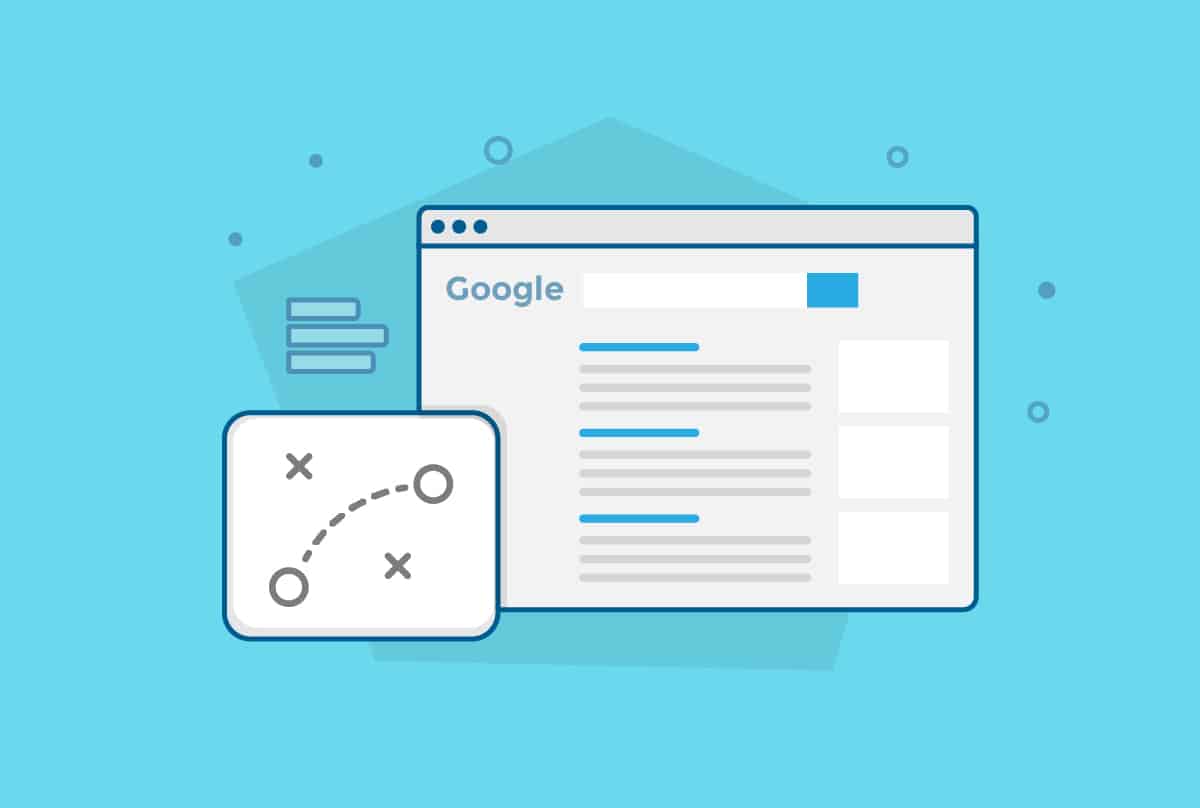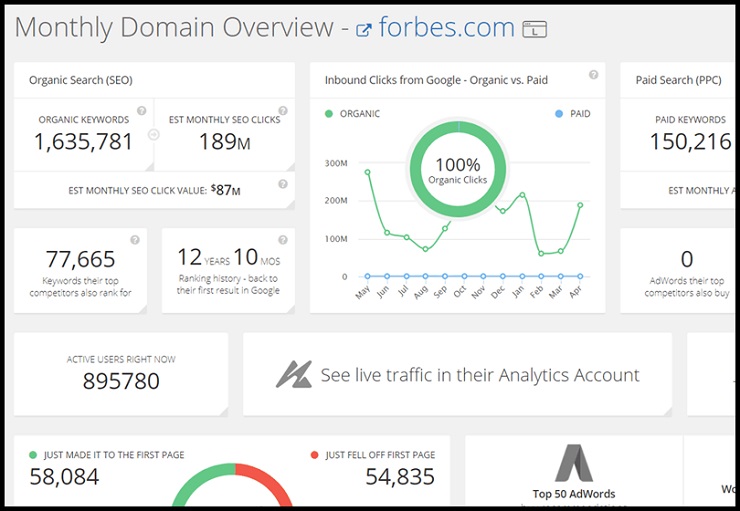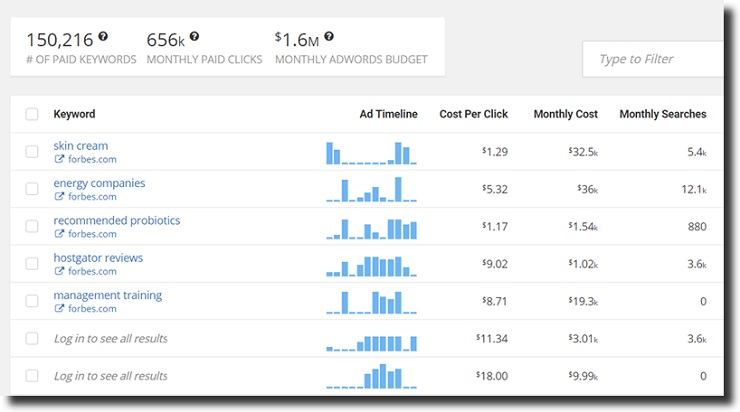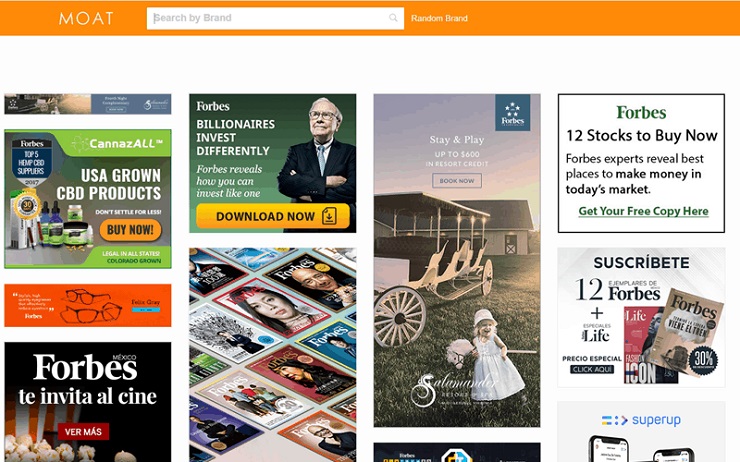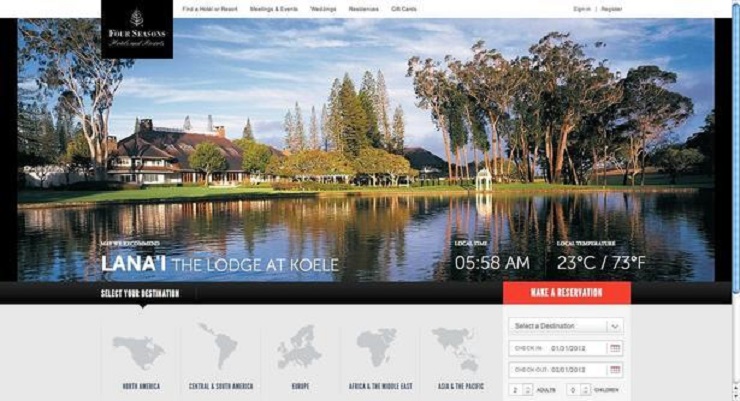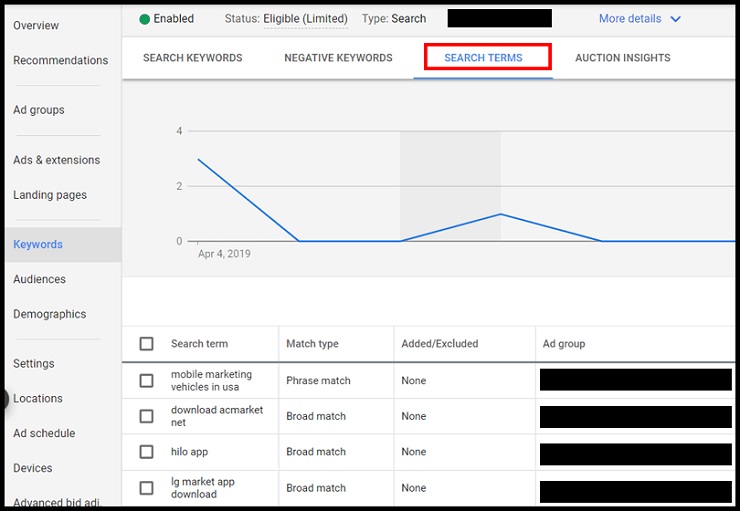In 2018, Google reported $116 billion in ad revenue.
Just four years earlier, it was around half that. This means more advertisers are entering the market every year and your job as an entrepreneur is getting much, much harder.
I should know—as a professional digital marketer, I’m personally responsible for adding several million dollars to Google’s numbers over the past decade. And that’s taught me some rather expensive (and sometimes painful!) lessons on how to effectively advertise ecommerce products on Google. How to do it cheaper. With less effort. And a better bottom line.
Whether you’re just launching campaigns for a new line of products, or you’re trying to get some new ideas for existing ones, these tactics will help you ramp up your campaigns faster, optimize with greater clarity, and experiment with confidence.
Here we go.
EXCLUSIVE FREE TRAINING: This New Free Masterclass Will Make You Unstoppable
1. Get Inspiration From Your Competition
Beginners start from scratch. Pros learn from others.
Before anyone sees your first ad, before even the words for it have touched the page, somebody out there has already spent a great deal of money finding out what works best for selling your ecommerce product.
They’ve tested where to advertise, whether on Facebook, Twitter, or Google. They’ve tested who to advertise to. They’ve figured out the best messages to promote so that prospects are opening their wallets. They’ve experimented, failed, and tried again. They’ve tested emails and landing pages and opt-ins and direct mail…
And all of this information is out there, waiting for you to take for yourself. Knowing that, wouldn’t it be complete lunacy to ignore it?
Who, exactly, would be crazy enough to give you all of this information? I’m talking about your competitors. And unless your product is truly the first of its kind in every conceivable way (and very few things are), you need to steal from them shamelessly.
Now, I’m not really talking about stealing. I’m talking about learning from others’ successes and failures, and finding inspiration that will improve your own chances of success. Other brands have spent thousands of dollars, maybe millions, finding out what works in your market. If you’re selling a brand new, revolutionary type of running shoe, you can still learn from what Nike, Puma, and Zappos are doing.
They’ve probably tested many of the very same things you, even now, are considering trying. So use this to jumpstart your own efforts by asking a few questions.
READ MORE: The Science-Backed Qualities of Good Leaders – And How To Apply Them To Your Business
Where Are They Getting Customers?
If you haven’t done this kind of research before, you might be surprised just how public advertising data is. You won’t be able to find out every channel your competitor is spending money on. For instance, direct mail, cold calling, and TV commercials are blind spots.
But if they do online advertising, you’ll almost certainly be able to find out where they are advertising, to whom, and approximately how large their budgets are. One of my favorite tools for this is SpyFu, which has both free and paid versions. All you need to start is your competitor’s website URL.
Tools like this will break down the paid advertising and organic traffic of certain websites, particularly if they advertise on Google or Bing. Separately, you can do Facebook research, which will tell you which companies are promoting themselves and even what ads they are running. Just check their Facebook page.
Google and Facebook make up over 58% market share of the ad market, so if they aren’t there, they likely aren’t spending online in quantity. This is also key information to help answer our next question.
Should You Really Be Advertising Your Products on Google?
Imagine you research a competitor and find they don’t do any Google Ads. Great, right? Not quite.
That’s like driving to the ocean in a populated region and finding the most gorgeous beach imaginable. Powdery white sand, water clear as glass, and not a soul in sight. Sure, you might have gotten lucky. Or there might be sharks.
Be very afraid if nobody in your space is doing the thing you are about to do. Sometimes, yes, your competitors just don’t have your vision or expertise. But here’s the thing—companies generally do not continue spending money on promotions that don’t work.
That means if nobody in your space is using Google, one of two things has most likely happened. Either nobody has tried it, or they tried it and found it didn’t deliver sufficient ROI. The latter is far more likely, and you should hesitate to dive in. If they are spending online on Google, your job becomes easier, and you need to ask yourself something else.
READ MORE: How To Be A Better Public Speaker
Where Are They Spending the Most Money?
If your competitors are throwing the majority of their dollars into search ads, you know that’s probably a good bet. If they’re getting the vast majority of their visitors from organic traffic, then an SEO-optimized content strategy might be a better fit for your business.
Content isn’t free. Your competitor likely spent a great deal of time or money building out a strategy and pushing out those articles or social media posts. But there’s a reason they’re still doing it. If they’re spending on Facebook Ads or Reddit instead, that’s where you should be focusing your attention (you can check out our posts on Instagram and Facebook for that).
A lifetime ago, I worked as the marketing lead for a B2B ecommerce company, and noticed a competitor’s ad in a trade magazine. It would be there like clockwork, every month, without fail. So I immediately convinced my bosses to spend a few thousand to put up a similar ad in the same magazine, and sure enough, leads galore.
The more money they spend on something, the more likely they are getting some kind of return from it. There’s always a Burger King next to a McDonald’s, and you should similarly shadow your competition. Just be wary of campaigns that have had short histories; they could just be experimenting.
What Keywords Are They Advertising on?
The miraculous thing about tools like SpyFu is that they’ll actually tell you what keywords your competitors are spending money on or ranking for. That’s astounding. Consider that if you were trying to sell sneakers, there would be thousands of variations of keywords you would need to test to see which are the most likely to produce direct sales.
Instead of doing that, you can immediately find out which keywords your competition is spending money on and thus, you know which keywords are worth spending money on. Again, they’d be unlikely to keep spending for particular words if they didn’t result in ROI. As you can see in the example below for Forbes, you’ll also discover detailed metrics like “Cost Per Click.”
And by the way, this doesn’t just apply to paid advertising – I suggest checking out this article on bootstrapping SEO if you want to take full advantage of the keywords you glean from this method. This is also a fantastic way to judge the success of your own campaigns.
Get Some Baseline Numbers—and Do a Little Math
Ultimately, when it comes to how to advertise on Google effectively, generating accurate financial projections for the success of your campaigns is key. That means you’ll need baseline numbers for average conversion rates, clickthrough rates, cost-per-sales, etc. It’s near-impossible to do this without actually putting your products out there and seeing how people respond. But you can cheat.
Thanks to the tools showcased above, you know the average bid per click for certain keywords and the price of your competitor’s product. So knowing that they’re likely breaking even, we can create a very rough formula.
Cost Of Their Product/Cost Per Click = Number Of Clicks Necessary To Generate A Sale
So if your competitor is selling an $80 pair of sneakers, and spending a fair amount on the keyword “best jogging shoes for men,” with an average bid of $10/click, you get something like this:
$80 Cost/$10 Per Click = 8 Clicks Necessary To Generate A Sale
This means the conversion rate is 12.5%, which gives you a number to judge how well you’re doing on your own product pages. If you find your pages are underperforming, there are quite a few tricks you can test to boost conversion.
And now that we’ve answered the critical questions, there are a few important caveats to keep in mind.
Don’t Plagiarize
While you should be looking for basic ideas, you should not be stealing exact copy, images, or otherwise ripping off your competitors’ work. I hope that’s obvious. Instead, take some basic direction.
You know your skateboard is sharper-looking, more stable, and better for tricks than any of your competitors. Which of those three features should you focus on?
Your competitors have likely already tested messaging, giving you a big hint of what your target audience cares about. Check their website. Their landing pages. Sign up to their email list. Buy their product and see their process.
What do they emphasize? What is the core concern they are trying to resonate within their words (and in their imagery)? If they keep talking about how sleek and well-designed their board is, you need to start there too. You can even find the banner ads they advertise with using tools like Moat.
Don’t plagiarize, just get inspiration.
Don’t Overvalue Creativity (For Now)
Your product is the best damn thing on Earth and you want the entire world to know. It’s not like all those other products—it’s different, special. You want to put out an advertising campaign as amazingly unique as your product, like the one for Dollar Shave Club or Old Spice.
But hold on there, cowboy. When it comes to your product, your audience has certain core desires, things they care about above all others. Your competitors already know what those desires are. So rather than being blindingly different, if you want to waste as little money as possible while getting the best results, your messaging should target those same core desires.
More important than being unique is making sure you know how to advertise on Google profitably, and if messaging works for your competitors, it’ll probably work for you. Build your foundation so you have room to innovate.
A Warning on Accuracy
You might not be able to find all the information you desire on your competitors. Even if you find it, that information might not be totally accurate. That’s OK.
Launching a new ecommerce Google ads campaign is like setting out on the road in the midst of a dense fog, without knowing which direction your eventual destination is. The purpose of all this research is to get all the information you can, so that destination becomes that little bit clearer.
Don’t just look at the tools discussed. Search them on Google, study their websites, scan their Facebook pages, see what promotions they’re running on their other social media, sign up for their emails, the works. The more you know, the more likely you’re going to knock that initial campaign out of the park. Generally, the longer they’ve been running a certain campaign, the more likely you can trust that they’re making money from it, and the more “weight” you should assign to your conclusions.
Even with all that research though, you’re likely going to run into the same problem nearly every Google Ad campaign experiences when it first launches. That gets to our next major point.
READ MORE: How To Stop Procrastinating And Smash Your Goals
2. Lose Money Quickly, Test Often
Here’s the hard truth. Most Google campaigns, no matter what kind of ecommerce product you’re selling, lose money at launch.
First, because it takes a few days for any campaign to hit its stride. Second, because you haven’t been able to perform the optimization your competitors have. Doing your homework makes this rough time at the beginning shorter, but we’re going to assume that your new product doesn’t just take off like fireworks (although if it does, good for you).
In this situation, your goal shouldn’t just be figuring out how to advertise on Google without losing money, but how to make the best use of that money. Use it to gather as much information as possible. And the keys to doing that as quickly as possible include three steps: execute, analyze, revise. Then repeat.
In These Early Stages, Speed Is Everything
The more time you spend executing, the more money you waste on testing. Naturally then, the key to wasting as little money as possible is to test as quickly as possible.
That means you should forget about that meticulously designed website, landing page, product page, or opt-in, and simply get something out there. All those stunning sites you see? They cost a huge amount of time and money, two things you can’t afford in a new launch. So don’t spend $18 million on a website like the Four Seasons did (even though you might be tempted).
Instead, test concepts. In order, the things you need to experiment with as rapidly as possible are:
1. The Audience – Who are you sending to the page? On Google, this is mostly dependent on keywords.
2. The Offer – What is the product and the offer behind the product? Do you offer guarantees? That includes pricing.
3. Messaging – What is the benefit showcased in the headline?
4. The Page – How is the information presented? Is it primarily text, imagery, or video? Long copy or short?
These are almost certainly the biggest factors influencing how well your campaigns will do. Adopt a Minimum Viable Product (MVP) mindset, and build the components of these tests for functionality, not looks or polish. Those can come later. This mindset will let you experiment as rapidly as possible.
Pick the Low Hanging Fruit First—The High Branches Can Wait
When you run these campaigns, you’ll notice big variances in performance across many variables. There will be different clickthrough numbers for your ads. Different conversion numbers for your product pages. Different costs per click for your keywords. Find the variable that you see the largest variances in and focus your experimentation on that.
Of course, all parts of your campaign matter, and you’ll eventually want to test every single component. But at this stage, we want to create the biggest changes as quickly as possible so that we can reach profitability faster. If you’re seeing big results in changing the ad copy, don’t switch to fiddle with another part of the funnel. Keep going until you hit decreasing returns, then switch.
Ultimately, getting inspiration from your competition will let you start your campaigns with the highest chance of success at that initial stage, and experimenting rapidly with an MVP mindset will let you optimize as quickly as possible. These two things combined with steady analysis should be enough to get you to a break-even point, assuming you have a product people want.
Next, we need to think about the long-term improvement of your campaign, which brings us to our third main point.
READ MORE: How To Win The Day The Spartan Way
3. Data Isn’t Enough—Context Matters
In these early weeks of your ecommerce campaign on Google, you’ll be absolutely bombarded with numbers. You’re going to get conversion numbers, clickthrough rates, costs per click, quality scores, impressions. It goes on and on. Tie that to Google Analytics and bounce rates and you’ll think you have everything you need to make effective decisions.
Not so. One of the biggest mistakes you can make is to develop tunnel vision on your data. You might know that people are buying your cast iron pot through the keyword “pot troubles.” But that doesn’t give you sufficient context to determine why people are actually buying your pot. Here’s how to correct that.
Study Exactly What People Are Searching for on Google
Advertising on Google Ads means you have access to the exact search terms people are using when they find your advertisement and click on it. Head over to the search terms bar, and you’ll be able to see, in detail, what people are actually searching for.
Make a list of all the search terms that resulted in real sales. Once you do, assuming you have sufficient data, you’ll start to notice trends in what people are typing in.
And this is gold, because it’s like your customers themselves are teaching you how to advertise on Google. Knowing that “faulty handle bar pot troubles” is the exact keyword that lead to a sale, for instance, marks that as a potential message to target in the future. In many cases, the people buying your stuff are doing it for a different reason than you originally intended.
One private photo-sharing app I marketed was intended for family photos, weddings, and baby pictures for the social media adverse. People ended up using it to share nude pics with their significant others. Who knew?
READ MORE: How to Stop Procrastinating and Smash Your Goals: A Psychology-Backed Plan for Entrepreneurs
Peep Over The Shoulder Of Your Prospects With Scroll Tracking.
Heat map and click-tracking tools like Crazy Egg are surprisingly affordable, and adds a ton of context to webpage interactions. How far down the page are they reading? What messages are they focusing on? Where are they clicking off? This is extremely helpful in knowing where you are winning and losing sales. Better, however, is actual video and session tracking.
Certain tools will let you see how visitors actually interact with your product page, as if looking through their eyes. You’ll see where they stop to read, where they click, where their mouse moves – essentially everything that matters. You’d be absolutely amazed at how just a few of these sessions will help solidify how to improve your offer and your page. You can even get a few sessions for free from FullStory.
Alternatively, you can use more formal user-testing on your product, just be aware that it can get pricey.
READ MORE: The Art Of Prioritizing: How To Pick Which Frog To Eat First
Combine Raw Numbers and Context to Build the Complete Picture of Your Campaign
A simple rule of thumb. If it has enough raw numbers (quantitative), then it’s worth spending the time to understand the reason behind those numbers (qualitative). On Google Ads, this is best done through checking keywords, search terms, and implementing visitor tracking on the actual product page. This is to paint a picture of your actual customer and what they’re looking for, enabling the most accurate information for long-term campaign planning.
EXCLUSIVE FREE TRAINING: This New Free Masterclass Will Make You Unstoppable
Try Out These 3 Tactics on How to Advertise on Google More Effectively (and Spend Less Doing It)
- Steal from your competition to build the foundation of your campaign and maximize that initial success rate.
- Experiment rapidly and intelligently to hit your numbers as quickly as possible.
- Use context and raw data to get a crystal-clear picture of your buyers for future planning.
Hopefully, the lessons I’ve learned using these tactics (and the ridiculous amount of money I’ve wasted not using them) will save you a few bottles of aspirin.
Questions? Concerns? Lessons you’ve learned that you want to share? Let me know by commenting below!
